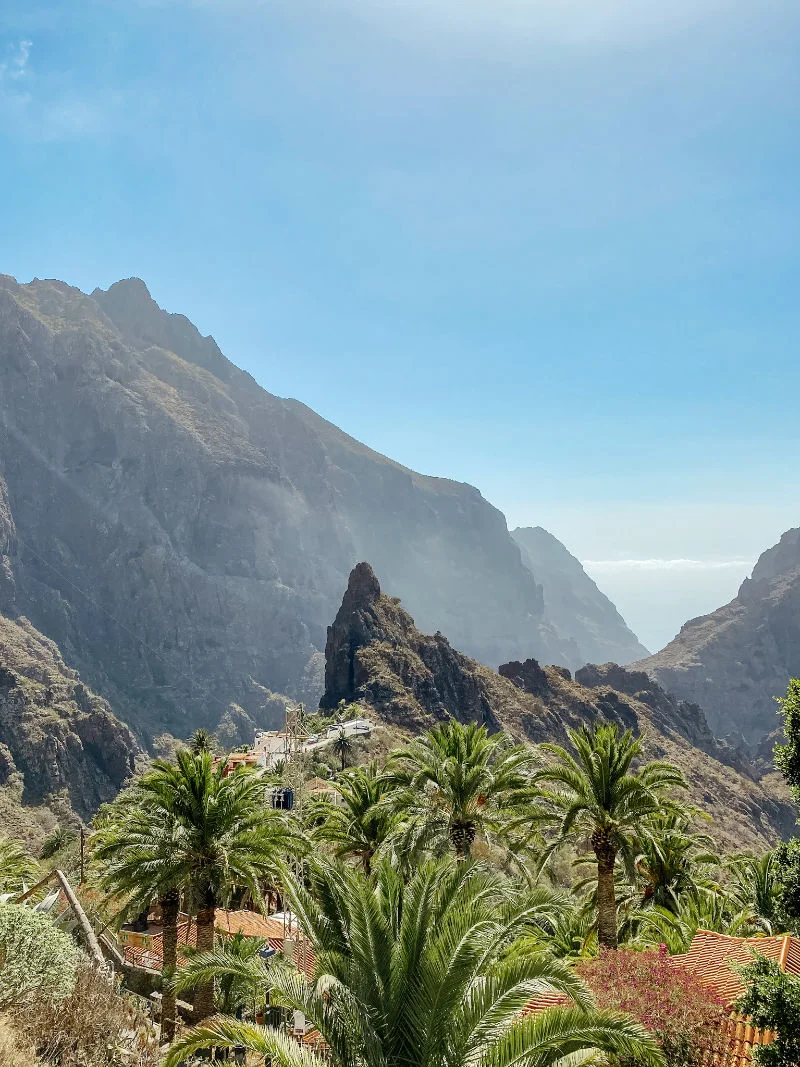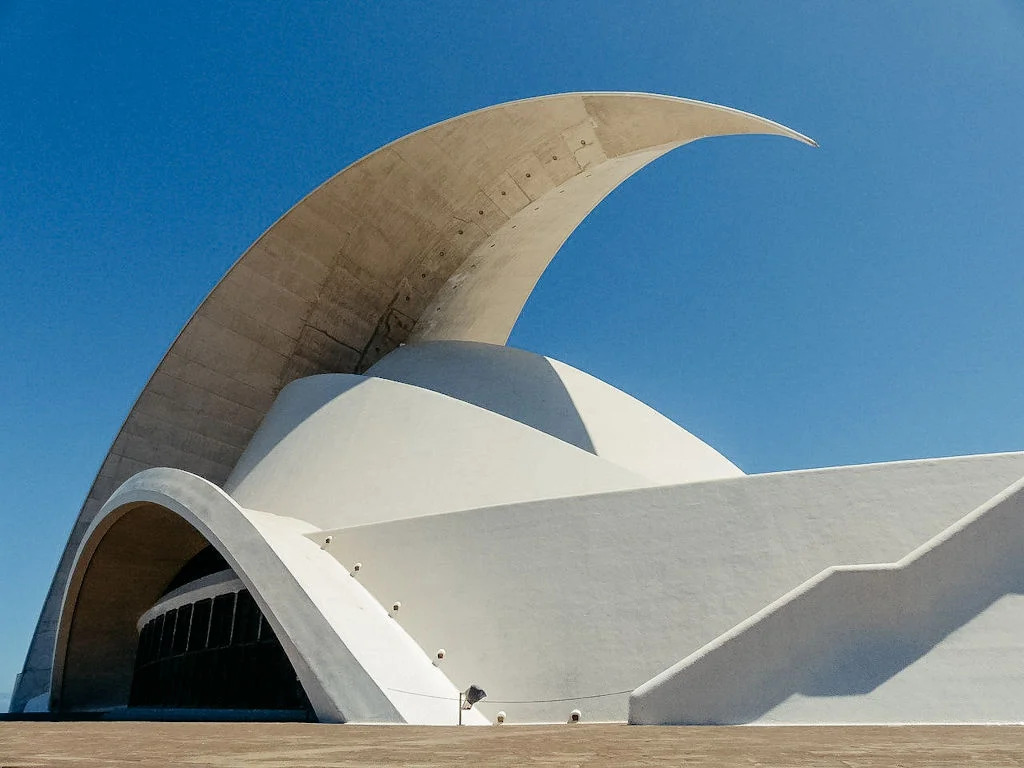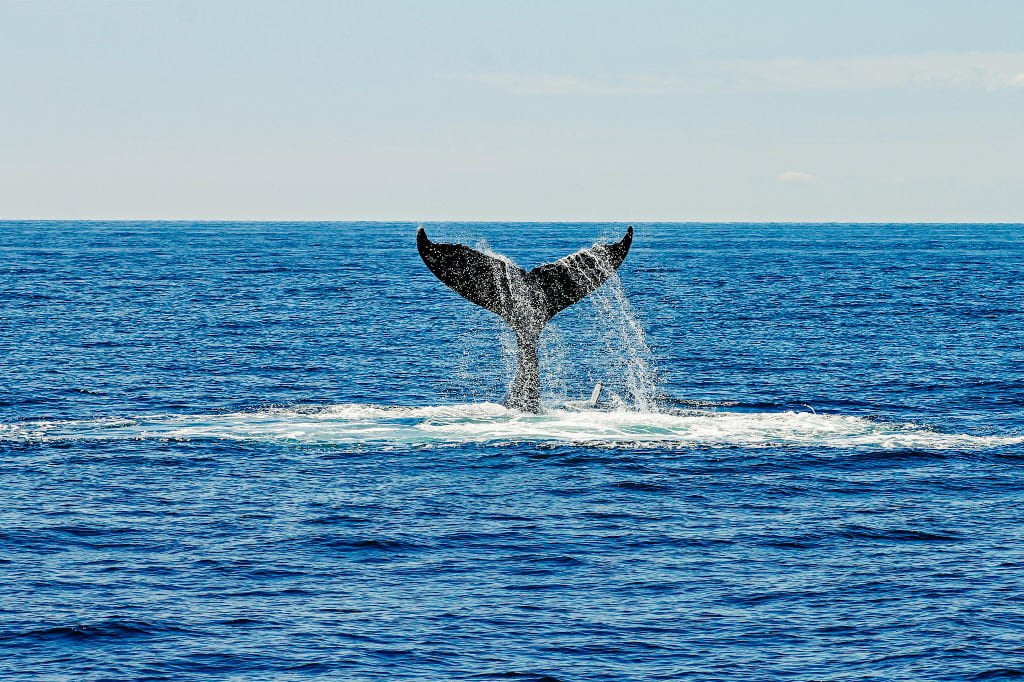The impressive Anaga Mountains stretch out in the northeast of Tenerife. In addition to beautiful beaches, you can also expect fairytale forests, unique natural pools, colorful houses and historical sights.
The old town of La Orotava
The old town of La Orotava is popular with many holidaymakers in the north of Tenerife. And rightly so, because on the one hand it is well worth seeing, and on the other hand the atmosphere in La Orotava is very relaxed and cozy. The old town takes you on a journey back in time to the 17th and 18th centuries. You can expect traditional wooden balconies, colorful house facades, pretty patios and many small details that you can discover on a city tour.
 La Orotava
La Orotava
The Botanical Garden of Puerto de la Cruz
The second oldest botanical garden in Spain is another attraction on Tenerife. It is located in the town of Puerto de la Cruz and is home to around 1,000 different tropical and subtropical species. The botanical garden was opened in 1788 and has hardly changed to this day. The highlight of the botanical garden in Puerto de la Cruz is a huge strangler fig, which, like the Acropolis in Athens, impresses with its many column-shaped structures. You can also marvel at a diverse collection of bromeliads that come from South America.
 Botanico
Botanico
The Rambla de Castro coastal path
The Rambla de Castro coastal path winds its way along the coast in front of Los Realejos, among tropical plants and above a cliff. This idyllic path is part of a nature reserve and is home to endemic plants such as the Canary Island date palm and the dragon tree. Playa de Castro is hidden beneath the cliffs. In a breathtaking location, you can reach the beach via a narrow path. Swim at your own risk, as the currents and waves can be very strong. The coastal path also has a famous photo opportunity: the La Gordejuela water pumping station. This was designed to pump water up from the spring of the same name to irrigate the fields. There is also a small fortress with three cannons from the 19th century along the path. The fortress, called Fortín de San Fernando, dates back to the 18th century and served as a watchtower to protect Tenerife from attacks.
 Rambla Castro
Rambla Castro
The thousand-year-old dragon tree of Icod de los Vinos
The Drago Milenario (thousand-year-old dragon tree) is located in the old town of Icod de los Vinos and is absolutely impressive. You can best admire it from the Plaza Andrés de Lorenzo Cáceres, or from the viewpoint in the botanical garden where the Drago Milenario is located. A visit to the thousand-year-old dragon tree is worthwhile because you can combine it with a tour of the old town of Icod de los Vinos and a visit to the museum plantation Casa del Plátano.
 Drago
Drago
Mariposario del Drago
Tropical indoor garden that houses over 800 species of live butterflies and carries out breeding programs. It is located in Icod de Los Vinos, near the thousand-year-old dragon tree.
 Mariposa
Mariposa
Cueva del Viento
The longest lava tube in Europe The next attraction on Tenerife involves climbing into a volcano. More or less. In the municipality of Icod de los Vinos, the Cueva del Viento, the longest lava tube in Europe, is hidden in the mountains. It is the 6th longest lava tube in the world, the other five are all in Hawaii. So it is worth visiting the Cueva del Viento on Tenerife, because then you don't have to fly so far. You may only enter the lava tube with a professional guide. In total, this tour through the Cueva del Viento takes 2-3 hours. Although the lava tube is not very small, you should not be claustrophobic
The historic town of Garachico
The coastal village of Garachico is a former port where sailors docked in the 16th and 17th centuries. At that time, Garachico was the most important trading centre in Tenerife. In Garachico you will find an old town worth seeing, an interesting viewpoint where you can see the old lava flows, and several natural pools. You can also go snorkelling on the beach. The water in Garachico is crystal clear and in the bay of Playa de Garachico it is usually quite calm.
 Garachico
Garachico
Punta de Teno
The westernmost point of Tenerife Punta de Teno is the westernmost point of Tenerife and therefore also a sight on our top 20 list. Punta de Teno is a headland with a small jetty and lighthouse that sits on the lava cliffs like something out of a picture book. But it's not just the lighthouse that's worth seeing, but also the view of the breathtaking cliffs of Los Gigantes. In Punta de Teno you can snorkel in the crystal clear water. Although you won't find countless fish, you can still spot one or two colorful fish. These include the East Atlantic trumpetfish, the European parrotfish and various sea urchins. Punta de Teno belongs to the municipality of Buenavista del Norte and is located at the foot of the mighty Teno Mountains.
Masca and the Masca Gorge
The first sight in this region is right on the north: the mountain village of Masca and the famous Masca Gorge. The village is located in the mountains of the Teno Mountains and is a popular destination for many tourists. And rightly so, because the village is located in an incredibly idyllic area. Small traditional houses and restaurants tailored to tourists as well as small shops await you. Even if that sounds like a lot at first, it is quiet there.
 Masca
Masca
The cliffs of Los Gigantes
One of our favorite sights in Tenerife are the cliffs of Los Gigantes. As the name suggests, these are gigantic cliffs that rise up to 600 meters vertically out of the sea. In the town of the same name, Los Gigantes, you can go swimming right next to the cliffs on the Playa de los Guíos beach. A unique experience, because the view is simply breathtaking.
 Los Gigantes
Los Gigantes
The Teide National Park
The absolute highlight of the sights on Tenerife is the Teide National Park. It is named after the volcano Pico del Teide, which is Spain's highest mountain at 3,718 meters. The Teide National Park covers 19,000 hectares and is located at an altitude of over 2,000 meters. However, this is not just about the Pico del Teide, as the national park includes a caldera with a diameter of 17 kilometers. Where the caldera is today, there was once a gigantic volcanic cone, the tip of the Tenerife volcano. In the Teide National Park you can stop at various viewpoints. There you will find various information boards where you can find out about the different zones in the caldera. Each viewpoint shows you a completely different landscape that is simply very impressive.
 Teide
Teide
Teide Observatory
Astrophysics in the Canaries began here at this Observatory. Located in Izaña (Tenerife) at 2390 metres above sea level, the site marks the point at which the municipal boundaries of La Orotava, Fasnia, and Güímar meet. The first telescope on the site was set up by the University of Bordeaux in 1964 and was used to carry out pioneering studies of the zodiacal light (light scattered by diffuse interplanetary matter).
The Observatory’s geographical location (midway between the solar observatories of the east and west), combined with the excellent quality of the sky for astronomy, led to Teide Observatory being dedicated mainly to the study of the sun. As a consquence, the site hosts the best European solar telescopes, such as the 1.5-metre diameter GREGOR. In 1979, this Observatory became the birthplace of helioseismology (a technique that provides us with an insight into the interior of our star through the study of its internal and surface vibrations).Teide Observatory also hosts other kinds of excellent professional instruments, including standard nocturnal telescopes, robotic and remotely operated telescopes, and experiments to measure the cosmic microwave background radiation. With their help the most important comets in recent years have been monitored, including the collision of Comet P/Shoemaker-Levy with Jupiter, and the compilation of large-scale maps of the Galactic centre.
 Teide Observatory
Teide Observatory
The Palmetum Palm Park in Santa Cruz de Tenerife
The Palmetum Palm Park in Santa Cruz de Tenerife is a botanical garden in Tenerife's capital, located right on the coast. With a total area of 12 hectares, this botanical garden specializes in palm trees. The Palm Park of Santa Cruz de Tenerife is home to the largest collection of palm trees in all of Europe. So you can walk through a beautifully landscaped park and look at tropical palm plants from all over the world.
 Palmetum
Palmetum
The Basilica of the Virgin of Candelaria
The Basílica de Nuestra Señora de la Candelaria (Basilica of Our Lady of Candelaria) is a very special place in Tenerife because the basilica is the home of the patron saint of the Canary Islands. The basilica is located in the town of the same name, Candelaria, on the east coast of the island. The history of the village goes back to the original inhabitants, the so-called Guanches. It was they who discovered the Virgin of Candelaria.
 Candelaria
Candelaria
Candelaria is now a place of pilgrimage. Every year, thousands of people make a pilgrimage to the basilica every February 2nd and August 15th, taking several pilgrimage routes. If you would like to find out more about the Basílica Nuestra Señora de la Candelaria and the town around it, then take a look at our article Candelaria - Sights in Tenerife's famous pilgrimage site.
The Auditorium of Tenerife
An attraction on Tenerife delights architecture and culture fans: The Auditorium of Tenerife. The concert hall is located directly on the coast of Santa Cruz de Tenerife and impresses above all with its special appearance, which makes architecture fans' hearts beat faster. It looks like a gigantic sculpture that seems to sparkle under the light of the sun.
 Auditorium
Auditorium
San Andrés and the Playa de las Teresitas beach
The next sights are hidden behind Santa Cruz de Tenerife: San Andrés and the Playa de las Teresitas beach. San Andrés is a fishing village with its colorful houses winding up a steep slope. Some houses can only be reached via hundreds of steps, but the walk is worth it. From the top you have a fantastic view of the green mountains of the Anaga Mountains and the Playa de las Teresitas beach.
The Cruz del Carmen viewpoint
The Cruz del Carmen viewpoint is also located in the northeast of Tenerife, in the middle of the Anaga Mountains. This is in the western part of the Anaga Mountains, not far from San Cristóbal de La Laguna. From the viewpoint you have a wonderful view over the valley of La Laguna to the volcanic peak of Pico del Teide.
The old town of San Cristóbal de La Laguna
San Cristóbal de La Laguna, also known as La Laguna for short, is home to one of the most beautiful old towns on the Canary Islands. In the 15th century town, modern life now mixes with historic colonial buildings, churches and monasteries. The colourful old town on Tenerife was founded by Adelantado Alonso Pérez de Lugo and was the first colonial town without a city wall. The reason for this is its location between the mountains, as La Laguna is over 500 metres above sea level. The north of Tenerife is mainly characterized by agriculture and lots of greenery. The reason for this is the trade wind clouds that get stuck on the high mountains in the north and thus bring a lot of moisture to this region. In the north of Tenerife you can expect historical buildings, tropical plants, wild coasts and a tree that is said to be more than 1,000 years old. 9. The mystical Agua García forest The 9th sight on Tenerife is the Agua García forest in Tacoronte. This is located at an altitude of over 900 meters in a region characterized by agriculture. The forest has a mystical effect. Aerial roots hang from the branches, clouds wander through the trees and mysterious caves appear here and there - it seems as if mythical creatures live in this forest. The Agua García forest is a deciduous forest and belongs to the Las Lagunetas nature reserve, which extends into the mountains. You can hike through the forest or take a leisurely stroll on well-signposted paths. Part of the route is even suitable for people with mobility issues and strollers. In the Agua García forest you can also take the route of the centenary guardians. This takes you to the "Viñátigos Centenarios". These are trees that are several hundred years old and originate from the Canary Islands, Madeira and the Azores.
Whale Whatching
A very special highlight on Tenerife can be found at sea. Whales and dolphins live in the Canary Islands' waters all year round, and they are mainly found on the west and southwest coast of Tenerife. Tenerife is considered one of the best places in the world for whale watching. In comparison to many other well-known areas where whales can be observed in the wild, whale watching in Tenerife is possible all year round. The waters around the Canary Island are a playground for countless special fish and whale species as well as many very special marine plants.

Loro Parque
Loro Parque is a privately owned zoo and tropical plant collection located in Puerto de la Cruz (Tenerife, Canary Islands, Spain). The Loro Parque Group is also a company that manages some of the most important theme parks in the Canary Islands, such as Siam Park and the Poema del Mar Aquarium.
 Loro Parque
Loro Parque
